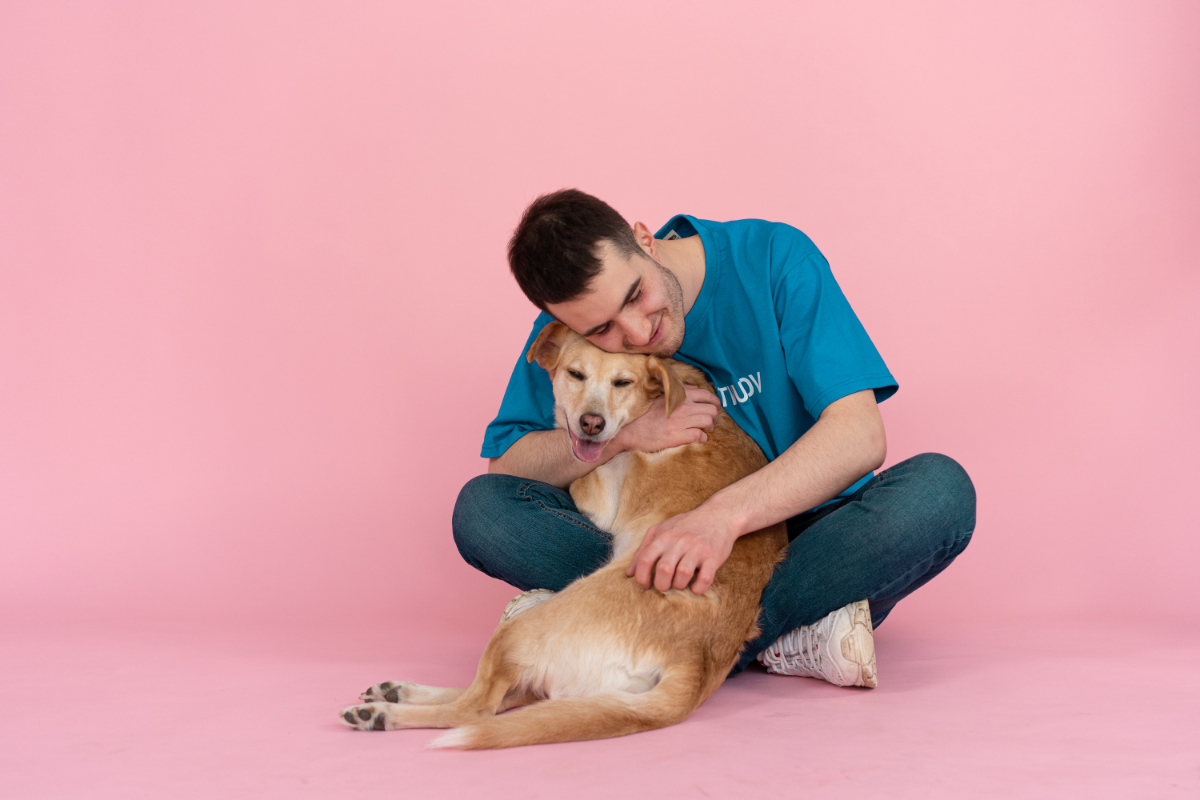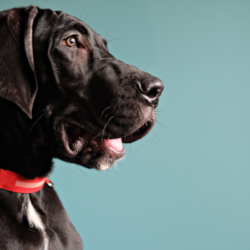Dogs’ means of communication have fascinated owners and researchers for decades. Understanding how dogs express their needs, emotions and intentions can profoundly improve our relationship with them. Dogs use a range of signals to communicate, including vocalisations, facial expressions, body postures and social behaviour.
This article explores the different forms of canine communication, highlighting the subtleties of barking, growling and barking, as well as the hidden meanings behind tail movements, ear positions and eye contact. By decoding these complex signals, owners can respond more appropriately to the needs of their four-legged companions, strengthening mutual understanding and emotional connection.
The human-dog relationship
Domestication is an evolutionary process in which animals adapt to humans, resulting in genetic transformations. The domestication of dogs began between 16 and 32,000 years ago. Dogs play a variety of roles in society: companions, working dogs or unwanted guests.
Two models describe the human-dog relationship: the lupomorph model and the babymorph model. The lupomorph model, based on a dominant-subordinate hierarchy similar to that of wolves, is invalid due to the distinct social structures of dogs and wolves. The babymorph model considers the dog as a member of the family, similar to a child.
The concept of attachment derives from imprinting in nesting birds and describes the dog’s relationship with its owner. Studies show that dogs seek physical contact and reassurance from their owner. The concepts of secure-base effect and safe haven effect indicate that dogs explore and react less to stress in the presence of their owner.
Humans control resources, creating a dependency in companion dogs, which are more interactive than working dogs. Dogs’ social skills, developed during domestication, enable them to adapt to human expectations.
The emotional bond is stronger in single, divorced and widowed owners. Dogs offer physical and mental benefits, such as stress reduction and improved cardiovascular health. The interactions and temperament of the dog influence this relationship.
Olfactory communication
This mode of communication, based on pheromones, is much more developed in dogs than in humans. The chemoreceptors located in the nasal cavities and the vomeronasal organ via the flehmen in dogs cover a surface area of 17 to 160m², compared with 5cm² for human olfactory receptors.
Pheromones cause hormonal or emotional changes in the receptor. Their study is complex because of the multitude of molecules involved. In dogs, pheromones are emitted by the anal sacs, the perineal hepatoid glands and the facial or pod glands. Although humans do not consciously perceive these signals, they produce them and dogs are receptive to them.
The experiment by Millot et al (1993 ) showed that dogs can discriminate between the odours of their owners. Dogs mainly sniff the head and hands, showing more socio-positive behaviour with familiar odours. They use visual and olfactory information and adapt their reactions according to the familiarity of odours and visual signals. Humans unconsciously send olfactory signals, which dogs interpret to determine our emotional state.
Auditory communication
Dogs have very fine hearing which perceives frequencies from 65 Hz to 15 kHz, facilitating intraspecific communication. Humans use language to communicate with dogs, but dogs perceive sounds according to their structural characteristics.
Dog vocalisations, such as barking, are used for communication and reflect states of excitement. Puppies trained by humans vocalise more frequently than those living in packs. Pongracz et al (2005) have shown that humans can categorise barking according to context and emotional content, indicating that the frequency of barking is key to understanding the dog’s emotional state.
Dogs understand mono- or dissyllabic words thanks to the characteristics of the sounds. An average dog understands around twenty words, while a guide dog may understand around a hundred. Mitchell (2011) observed that humans talk to dogs in a similar way to babies, using a high-pitched voice and simple words.
Acoustic structures such as short, repetitive signals trigger behaviour in dogs, while long whistles inhibit action. Using whistles ensures stable communication that is unaffected by human emotions. In this way, dogs and humans are able to communicate and understand each other effectively.
Visual communication
Visual communication in dogs is influenced by a variety of morphological characteristics due to the diversity of breeds. Colour patches, facial musculature, ear position, hair and tail shape all play a crucial role. For example, Bull Terriers and Boxers, which are often caudectomised, are less expressive, while dogs with dense facial hair, such as Bobtails, are less understood by their fellow dogs.
Emotional movements, such as piloerection and mydriasis, reflect emotional states. Specific movements, such as play, submission or dominance postures, vary according to breed, socialisation and the owner’s influence.
Human understanding of these movements depends on knowledge of canine ethology. Some movements are ritualised, acquiring a communicative function.
Human signals include torso position (dominant, neutral, dominated), movement speed (fast, medium, stop sequence), trajectory (direct, diverted), and gaze (direction and persistence). These signals enable the dog to assess the human’s emotional state. Dogs are also sensitive to human facial expressions, which are useful for emphasising emotions such as reprimand.
Tactile communication
Soothing signals
Dogs communicate via a sophisticated body language that is more developed than that of humans. They express joy, fear, anxiety or discomfort (appeasement signals) and warn of imminent defensive reactions (threat signals). These signals, used to communicate with humans, can lead to aggression if misinterpreted.
Dogs use calming signals to avoid conflict. They seek to calm their anxiety and appease the stressful individual (other dog or human). If there is no appropriate response, these signals can evolve into threats or attacks. Recognising these signals is crucial to avoiding bites. Around 30 calming signals have been identified, varying according to the dog and the situation.
Examples of appeasement signals:
- Averting your gaze or turning your head: avoids conflict.
- Licking lips or nose: indicates discomfort.
- Yawning and stretching: signals boredom or discomfort.
- Sniffing the ground, shaking, scratching: indicates stress.
- Freezing or remaining motionless: indicates great fear or anxiety.
- Squinting or closing the eyes: a sign of passivity.
- Walk away: avoids conflict.
- Walk in a curve: friendly approach.
- Wagging tail in small, jerky movements: excited, but not necessarily happy.
Humans must learn to spot and react to these signals to avoid misunderstandings. Responding with similar signals, such as yawning or looking away, can calm the dog down. It is also advisable to adapt your tone and attitudes to avoid provoking appeasement signals.





